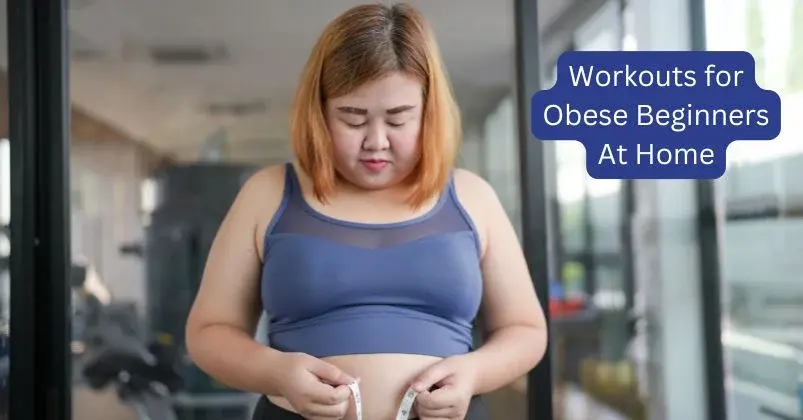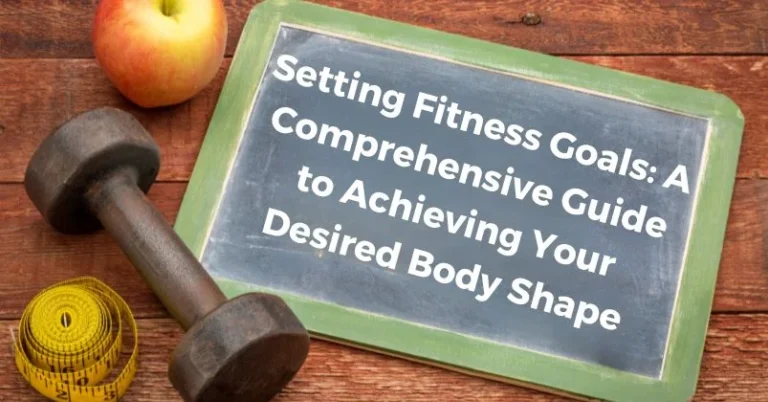Workouts for Obese Beginners At Home
Taking the first steps into fitness as an obese beginner can feel intimidating, but it’s also empowering. Starting slow and setting achievable milestones opens the door to a healthier life, one step at a time.
Even 5-10 minutes a day of exercising can lower your risk of disease, build strength, and boost confidence. With beginner-friendly movements and gentle exercises, you can safely and effectively begin your fitness journey at home—without risking strain or burnout.
However, the problem is that as a beginner, an obese person can face numerous challenges. They range from identifying the best exercise routine and doing it right to staying consistent. Most of these challenges, when thrown at you right off the bat, tend to discourage beginners.
Luckily, there are effective workouts for obese beginners at home that they can easily incorporate into their weight loss plan and everyday schedule. With these workouts, beginners are usually high on motivation, which encourages them to put in their maximum effort and stay on top of their fitness goals.
How Can A Person With Obesity Start Exercising?
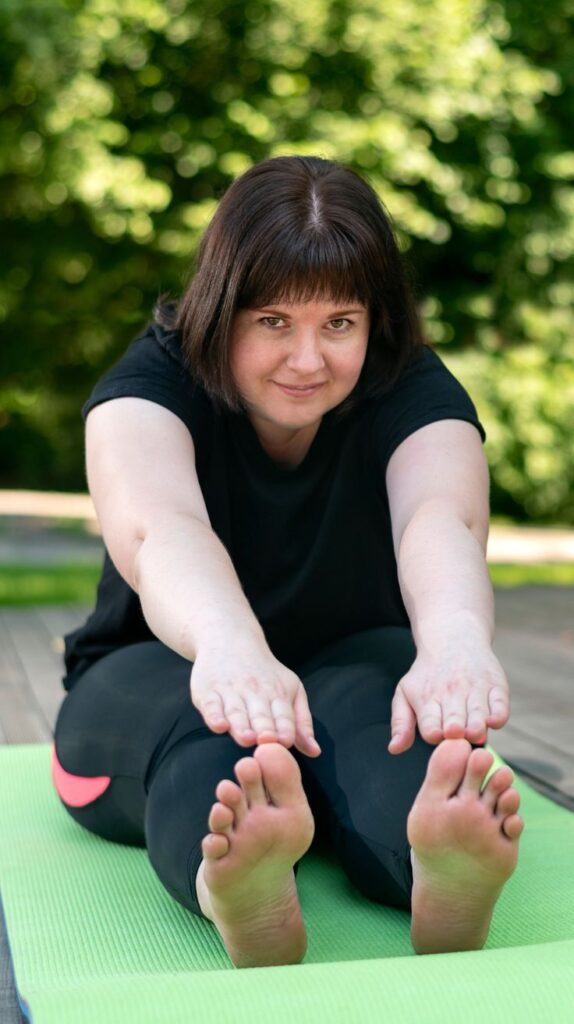
Exercise can steadily improve many aspects of health. However, everybody’s needs are different when it comes to exercise. Initially, you can do the below-mentioned steps.
- Start slowly: Any exercise when started slowly can significantly lower cardiovascular disease risk. Therefore, if you are confused where to start to lose 100 pounds, it is good to kickstart with minor exercises, even 5–10 minutes can help.
- Adapt movements: A person should not try exercises that feel too intense. Instead, they can adapt movements to their fitness level. For example, walking more slowly or on a flat surface may be easier than jogging or walking uphill. These adaptations allow a person to challenge themselves more as they build fitness.
- Consider lower-impact exercise: People with joint pain or similar conditions may find that it helps to try exercises that put less strain on the body, such as water aerobics, walking on soft surfaces, or yoga.
- Incorporate movements into daily life: Doing housework, gardening, playing with pets or children, and walking up and down stairs can all be forms of exercise.
- Consider taking a class: Exercising with a group can help with motivation, teach a person how to do certain movements safely, and give a person access to the expertise of a fitness instructor.
- Consider physical therapy: If someone has chronic pain or has not exercised in a long time, they may benefit from one-to-one attention from a physical therapist.
Exercise Plan For Obese Beginners At Home
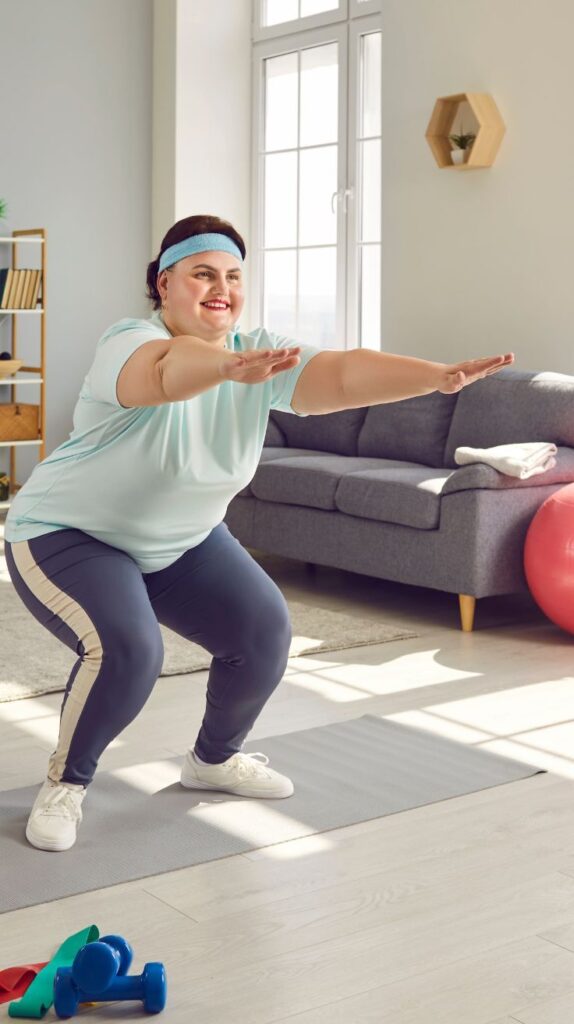
As per the American College of Sports Medicine, obese individuals should work out for 250 minutes/week to achieve significant weight loss. Moderate-intensity exercise for 150-250 minutes/week offers only modest weight loss.
When deciding on your exercise plan, you should consider the following factors:
How many minutes of exercise per day
Begin with just 10 minutes/day and work up to 50 minutes/day over the next few weeks, repeating it 5 times a week. Alternatively, you can work out for 37 minutes all 7 seven days of the week to hit the 250 minutes/week target.
Low impact exercises
Make sure to choose activities that put minimal stress on the joints, as overweight individuals already have elevated stress on certain joints. Walking is very low-impact workout for obese beginners, but it is a good start. You can also prefer swimming stretches your muscles, increasing your mobility, yet has the least impact on your joints.
Adequate cardio
Start by walking regularly for at least 5 days/week. Then begin with interval training of jogging for 15 seconds or even a minute and then walking for the next five minutes. Over the next few weeks or months, gradually increase the jogging intervals until you can eventually complete a short run.
At-Home Workouts For Obese Beginners
Rather than just cardio, strength training is also important for obese beginners. Weight training helps build muscle and burn fat more efficiently.
If you are looking for an exercise plan for obese women or men, here are some at-home exercises to consider:
Modified push-ups:
If you find it difficult to do standard push-ups, try doing a similar exercise by elevating your hands on a bench or chair. If this is still too difficult, you can raise them even higher until you are standing with a slight lean against the wall.
Modified squats:
Performing a bodyweight squat can be difficult if you are overweight as, in a normal full squat, you lower your body to the ground. For modified squats, you lower yourself into a sitting position using a chair, which can reduce the range of motion (ROM) until you build up enough strength to increase it.
Knee lifts with a ball:
Use a ball or a dumbbell to do this workout. Stand up and hold the ball above your head. Now lower the ball in front of you while bringing up one knee to meet it. Go back to the starting position and repeat with the other knee. Aim for 3 sets of 10 reps.
Side leg lifts:
Lie on your right side with the right hand under your head and the left hand resting on your hips or the floor. Now lift your left leg as high as you can, and then bring it down slowly. Repeat 10 to 15 times. Now, lie on your left side and repeat the same steps with the right leg. Aim for 2-3 sets of 10-15 repetitions.
Reverse bridges:
Lie on your back with your knees bent. Now, keeping your head in position and feet planted firmly, raise your hips off the floor, hold, and then lower back gently. Repeat the exercise, aiming for 3 sets of 8 to 12 reps. Bridges strengthen gluteus muscles and lower back.
Riding a stationary bike:
Cycling a stationary bike may very well improve your body’s ability to use oxygen and strengthen your heart muscles as it is an extremely low-impact cardio exercise. 20-30 minutes of moderate-intensity cycling is a suitable place to start.
Chair exercises:
You can use a pair of dumbbells to do seated bicep curls, seated chest presses, seated front shoulder raises, and shoulder presses. Clench your abs to maintain a strong core and good posture during these seated exercises.
While following the initial workout plans, it is good to supplement your weight loss efforts with 10 healthy tips and habits for beginners that might make your weight loss journey effective.
When to seek advice
People with any underlying conditions, chronic pain, or disabilities should speak with a doctor before starting exercise.
A person should also talk with a doctor if:
- Exercise worsens any medical symptoms
- Exercise is painful
- They feel physically unable to exercise
- They need help obtaining specific health or fitness goals
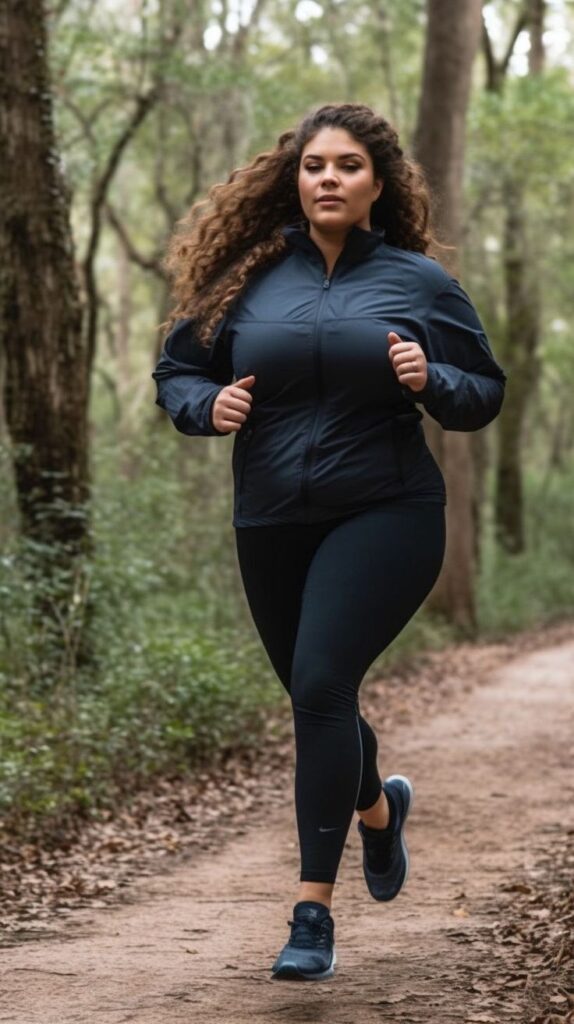
Conclusion
Overcoming obesity is no easy task, but breaking down your journey into achievable small goals will help you lose weight gradually and get healthy. It’s all about starting small and improving what you are capable of. If you start walking regularly, you will eventually be able to do short runs and, eventually, much more.
A proper workout plan/program needs to be followed. Be persistent and optimistic, give your body time to adjust, and track your progress using apps or a handwritten journal. The desired results may take months to achieve, but you will eventually reach your goal. Fitness is a lifetime journey.
FAQs
As a beginner, aim to exercise for at least 10 minutes per day, gradually increasing your time to 30–50 minutes, 5 times a week. Over time, work towards a weekly total of 250 minutes for optimal weight loss, as recommended by the American College of Sports Medicine.
Low-impact exercises are ideal for reducing stress on the joints. Walking, swimming, cycling on a stationary bike, and chair exercises are great starting points. Additionally, strength training exercises like modified push-ups, squats, and side leg lifts can help build muscle and burn fat.
Set small, achievable goals, and track your progress through fitness apps or a journal. Celebrate each milestone, no matter how small. Exercising with a friend or joining a class can also help with accountability and motivation.
Before starting any exercise routine, consult with a healthcare professional to ensure it’s safe based on your current health conditions. If you have joint pain, chronic pain, or other medical issues, a physical therapist can help tailor a safe and effective program for you.
Mild soreness after exercise is normal, but if you experience sharp pain or worsening of medical symptoms, stop immediately and consult a doctor. It's important to adapt exercises to your current fitness level and gradually increase intensity as your body adjusts.

